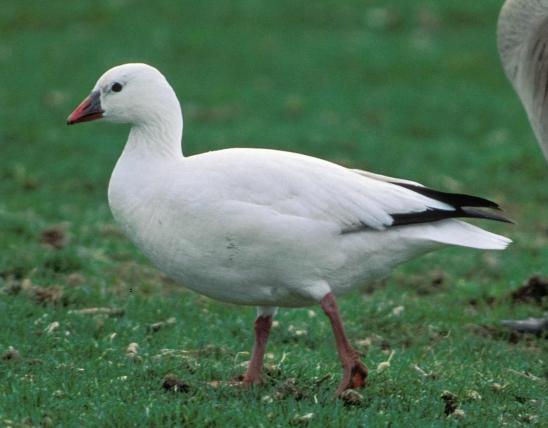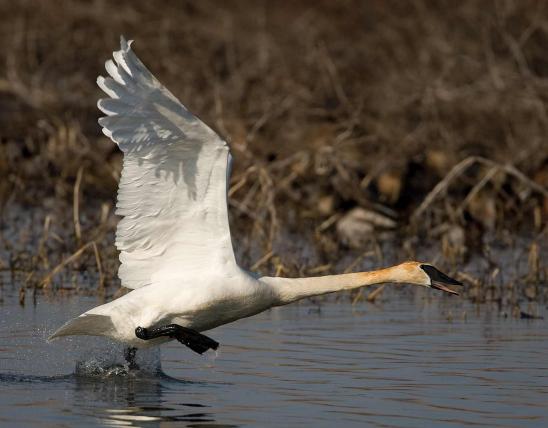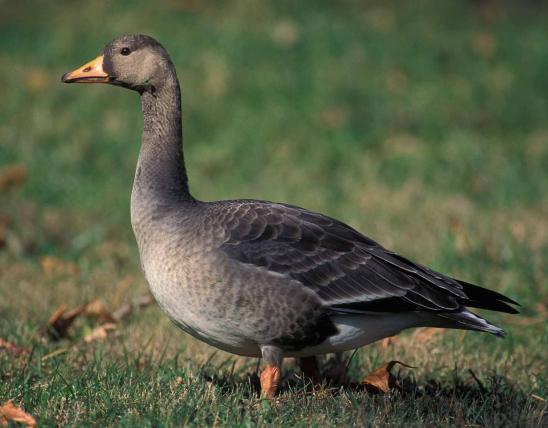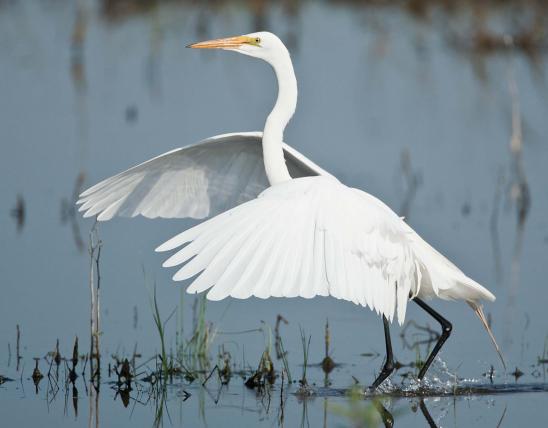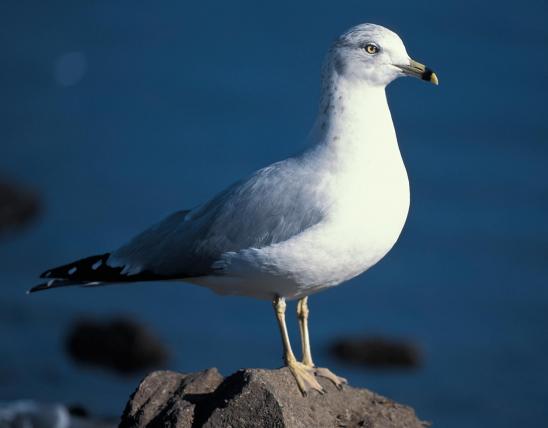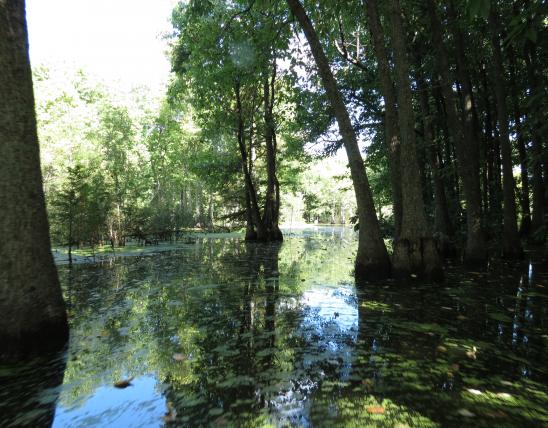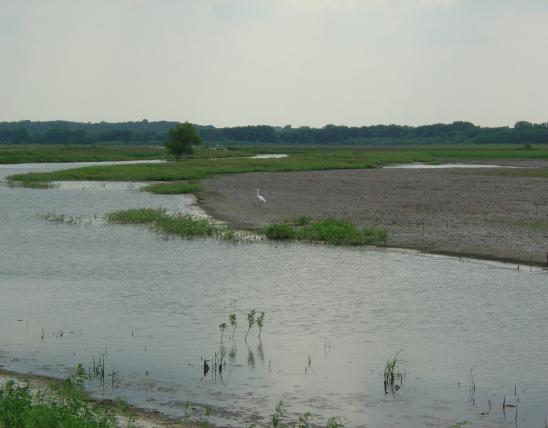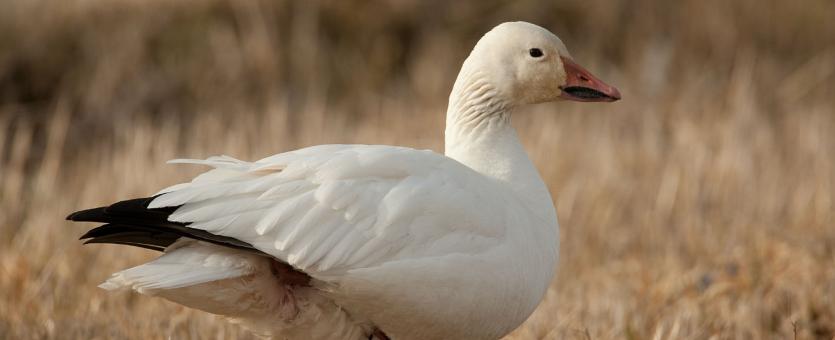
The snow goose is a medium-sized goose that has two color morphs, white and "blue." These used to be considered separate species. Both forms have pink bills with a black “lipstick” marking, and pink legs and feet. The white morph is mostly white, with black wingtips. The blue morph is mostly grayish brown overall, with a white head and neck, and white on the underside of the wing. Intermediate forms occur, and immatures look different from adults. The calls are loud and nasal.
Similar species: Ross’s goose has a shorter neck and bill and is the size of a mallard. It lacks the “lipstick” or “grinning” marks on the bill and instead has a blue-green warty patch saddling the upper bill near the base. Note that hybrids between snow goose and Ross’s goose are not rare.
Length: 28 inches (tip of bill to tip of tail).

Statewide.
Habitat and Conservation
Common in marshes, rivers, lakes, and crop fields. They almost always appear in groups, and the white forms almost always outnumber the blue. Populations of this species and Ross’s goose have increased to a historically high level. As a result they are overgrazing their arctic nesting range and degrading large areas of the arctic tundra where other species nest. Wildlife agencies have been trying to control the population size through various methods.
Food
Snow geese in winter are adapted for digging up and feeding on the roots of various marsh plants. In the past century or so, they have diversified into eating leftover grain in crop fields and other agricultural grain waste, as well as fields of rice, wheat, corn, and other grains, plus newly seeded winter wheat crops.
Status
Common migrant; uncommon winter resident.
Life Cycle
Snow geese overwinter in the southern part of their range, including Missouri, and return north to the arctic tundra to nest. Missouri's snow geese, part of the midcontinent population of the species, have a breeding range extending from Canada's Nunavut Territory eastward to Hudson Bay.
Pairs form during each bird’s second spring migration, and the couples stay together for life. They nest on the ground, and once hatched, the young are able to migrate back south when they are 6 to 8 weeks old. Snow geese can have a lifespan of at least 27 years.
During migration, snow geese follow relatively narrow corridors within North America's four migration flyways (including the Mississippi Flyway, which runs through Missouri). Along these corridors, they usually stop to rest at traditional places, especially in well-established large wetlands. They fly both day and night, usually in large groups. They make the most of good weather, preferring to fly on clear days with no precipitation. They can fly at altitudes up to 7,500 feet. Flying in Vs and in long, diagonal lines is aerodynamically efficient, saving each goose energy and enabling the geese to persevere during their long migration. Snow geese can fly some 40 to 50 miles per hour.
Human Connections
Snow geese are a popular quarry of waterfowl hunters.
Their large, calling chevrons flying high overhead during migration are a timeless symbol of the changing seasons.
When hundreds of thousands of snow geese take flight at one of Missouri's National Wildlife Refuges, it's a breathtaking sight.
Ecosystem Connections
Snow geese are an important food for bald and golden eagles during the winter months.
In snow geese breeding colonies, predators (including foxes, bears, gulls, jaegers, owls, ravens, and more) find plenty of eggs and goslings to feed on. Breeding season is also the most dangerous time for adult geese to be preyed upon, too.
The large, though transient, numbers of migrating snow geese impact the wetland ecosystems they pass through as they travel and devour a wide variety of plants and plant parts.
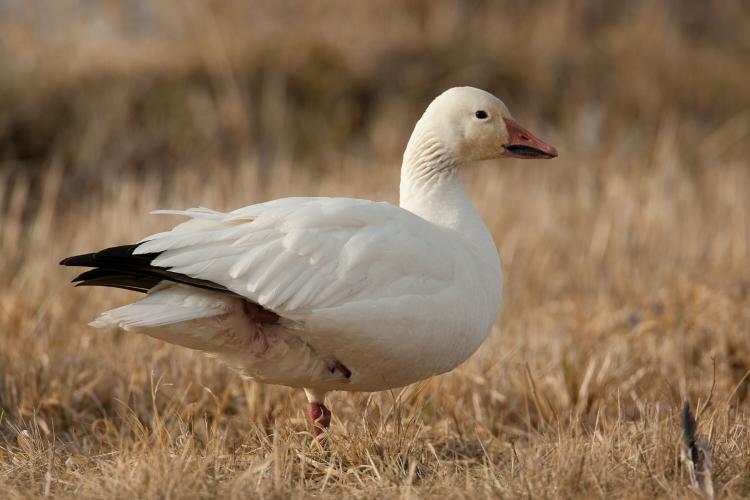
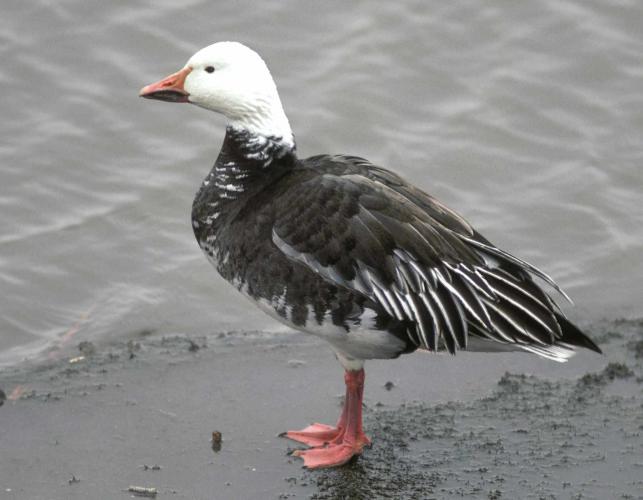
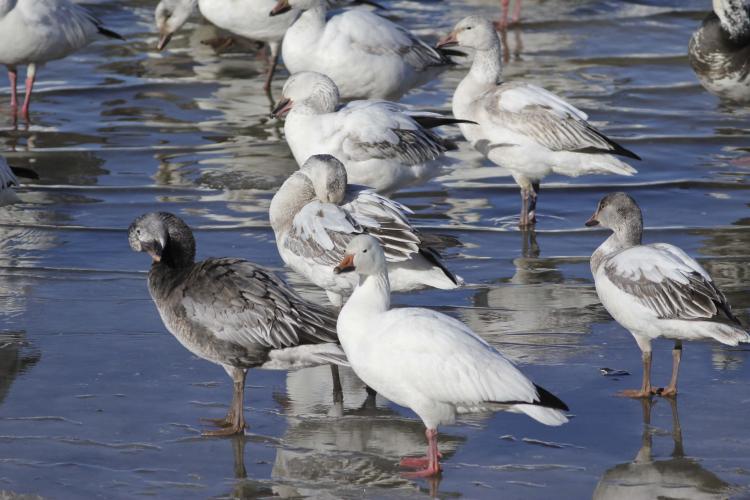
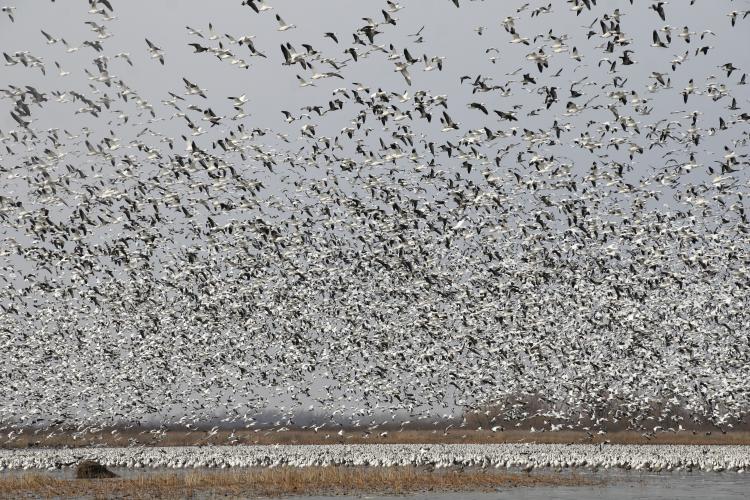
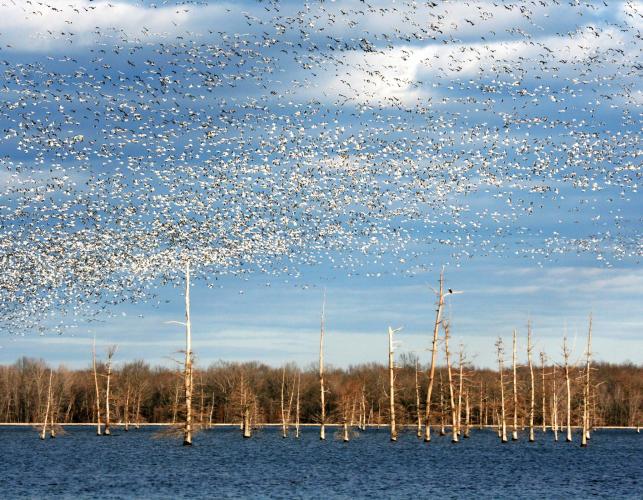
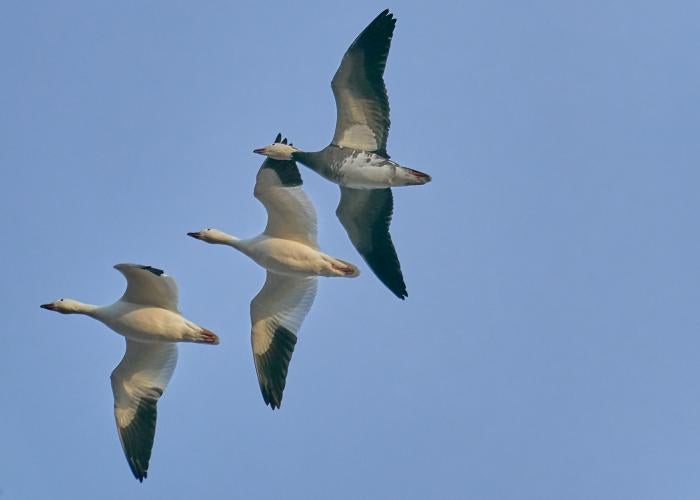

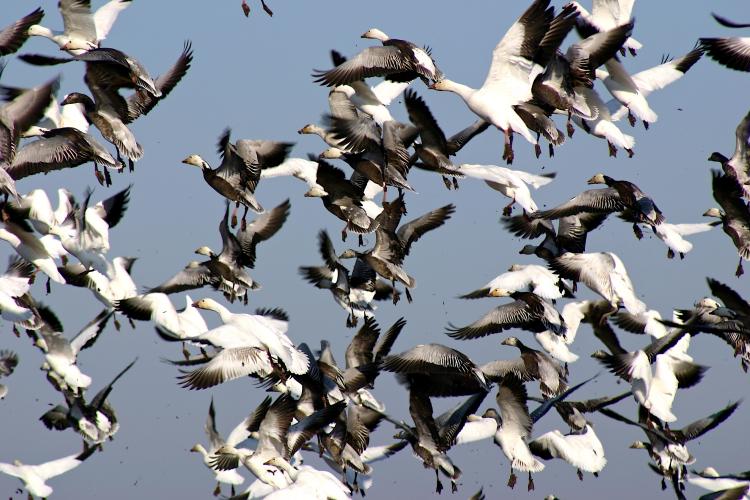
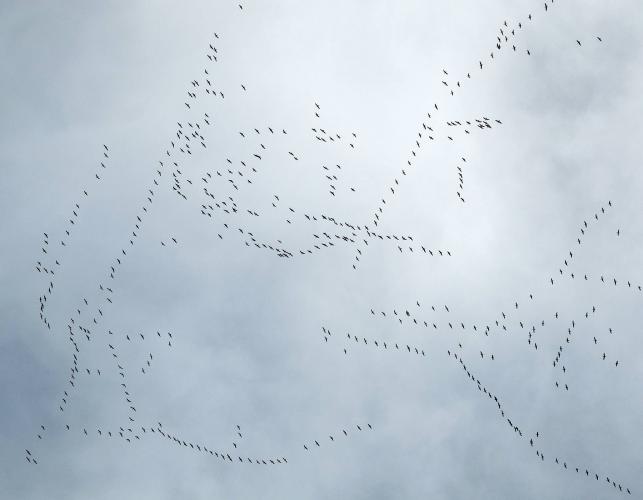

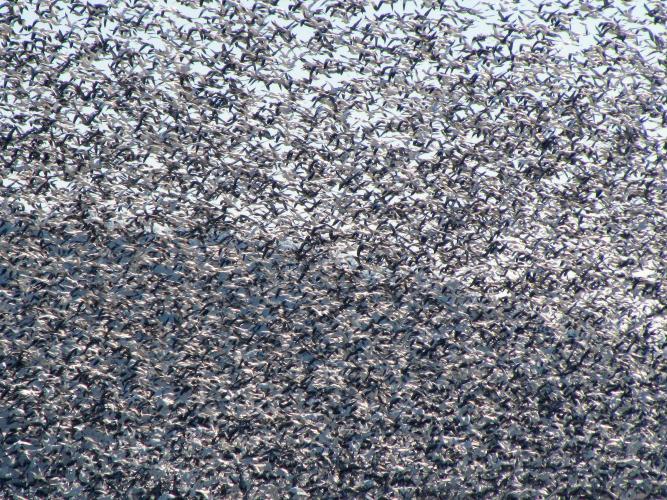

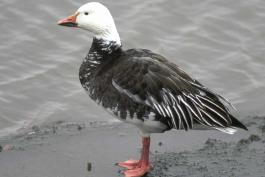
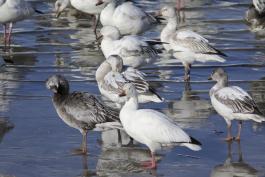
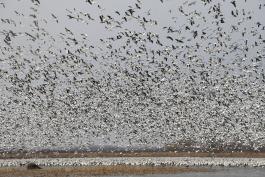
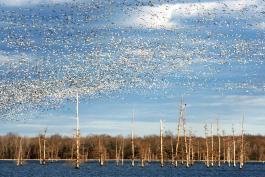
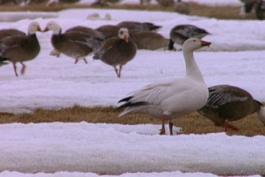
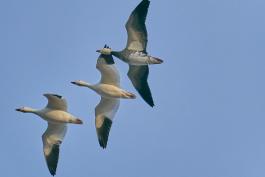
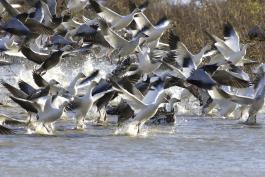

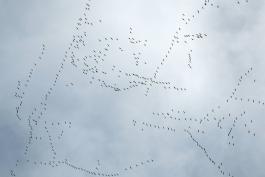
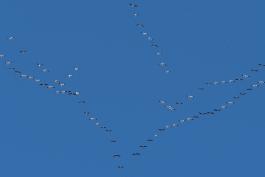
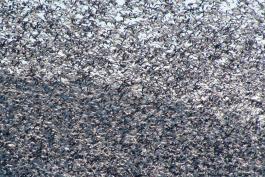

Where to See Species
About 350 species of birds are likely to be seen in Missouri, though nearly 400 have been recorded within our borders. Most people know a bird when they see one — it has feathers, wings, and a bill. Birds are warm-blooded, and most species can fly. Many migrate hundreds or thousands of miles. Birds lay hard-shelled eggs (often in a nest), and the parents care for the young. Many communicate with songs and calls.






















